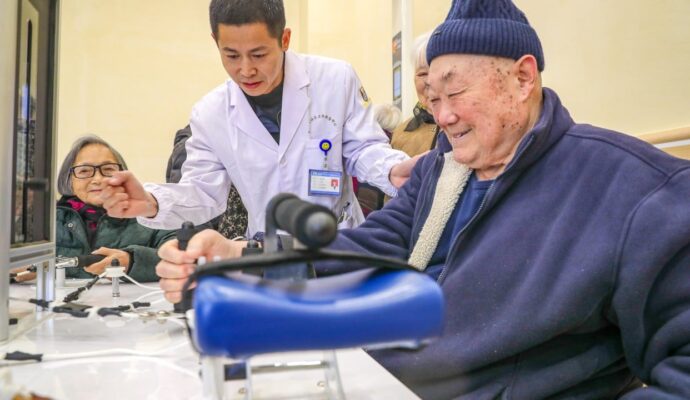
The indices gauged respondents’ sentiment through questionnaires, with a reading of 100 the division line between expansion and contraction.
‘Dare not spend’: China seeks fix as slowing economy may shrink middle class
‘Dare not spend’: China seeks fix as slowing economy may shrink middle class
Just over 61 per cent of the people surveyed said their family revenue had remained unchanged in the fourth quarter of last year, but about 10 per cent reported a large drop, while another 10 per cent said they suffered a small decline.
Overall, “household liabilities, including those used for consumption and businesses, continued to rise in 2023,” the survey showed.
The household debt index has remained high since the start of the coronavirus pandemic, with the fourth quarter reading of 103.4 down from the high of 113.7 in the fourth quarter of 2022.
The university’s household wealth and income survey is a widely used measurement of China’s middle class, with the families interviewed averaging 1.49 million yuan (US$209,000) of combined property and financial assets, while their average household income was 159,000 yuan (US$22,300).
China’s middle-income group was defined by the National Bureau of Statistics as a three-person household earning between 100,000 yuan and 500,000 yuan a year.
The survey’s findings have partly added to market concerns that Chinese households are focused on repairing their balance sheets, which have been hit hard by the coronavirus pandemic, as well as their job and income insecurity woes amid the post-Covid recovery.
Household debt in China already accounted for a record high 64.1 per cent of the national GDP in the third quarter of last year, marking a sharp rise from 17.9 per cent at the end of 2008 according to the Beijing-based National Institution for Finance and Development.
The survey showed middle class households are offloading their debt and hesitant to buy property, with only 6.4 per cent planning to buy property in the next three months, while 19.2 per cent said they would adopt a wait-and-see approach.
The home-buying debt index remained in contraction for the whole of last year, indicating households are repaying mortgages earlier than scheduled.
Meanwhile, self-indulgent spending, including travel and entertainment, has largely stayed in contraction since the coronavirus pandemic.
It had a small expansion in the second and the third quarters of last year, with readings of 100.6 and 100.7, respectively, but the index dropped to 97.5 in the final quarter of last year.
Low-income and middle-aged households have lower economic expectations, and they are the main groups that require further confidence boost in the future
The survey called for more government action to revive household confidence.
The proportion of households anticipating a better economic outlook in the next 12 months dropped to 22 per cent in the fourth quarter of last year from 31.3 per cent in the first quarter.
Those with a “very bad” economic outlook doubled to 10.1 per cent, while those choosing “bad” rose to 11.5 per cent from 7.6 per cent.
In addition, the household wealth report said that consumption and economic confidence dropped significantly among the low-income class, as well as the middle-aged group.
“Low-income and middle-aged households have lower economic expectations, and they are the main groups that require further confidence boost in the future,” it said.


